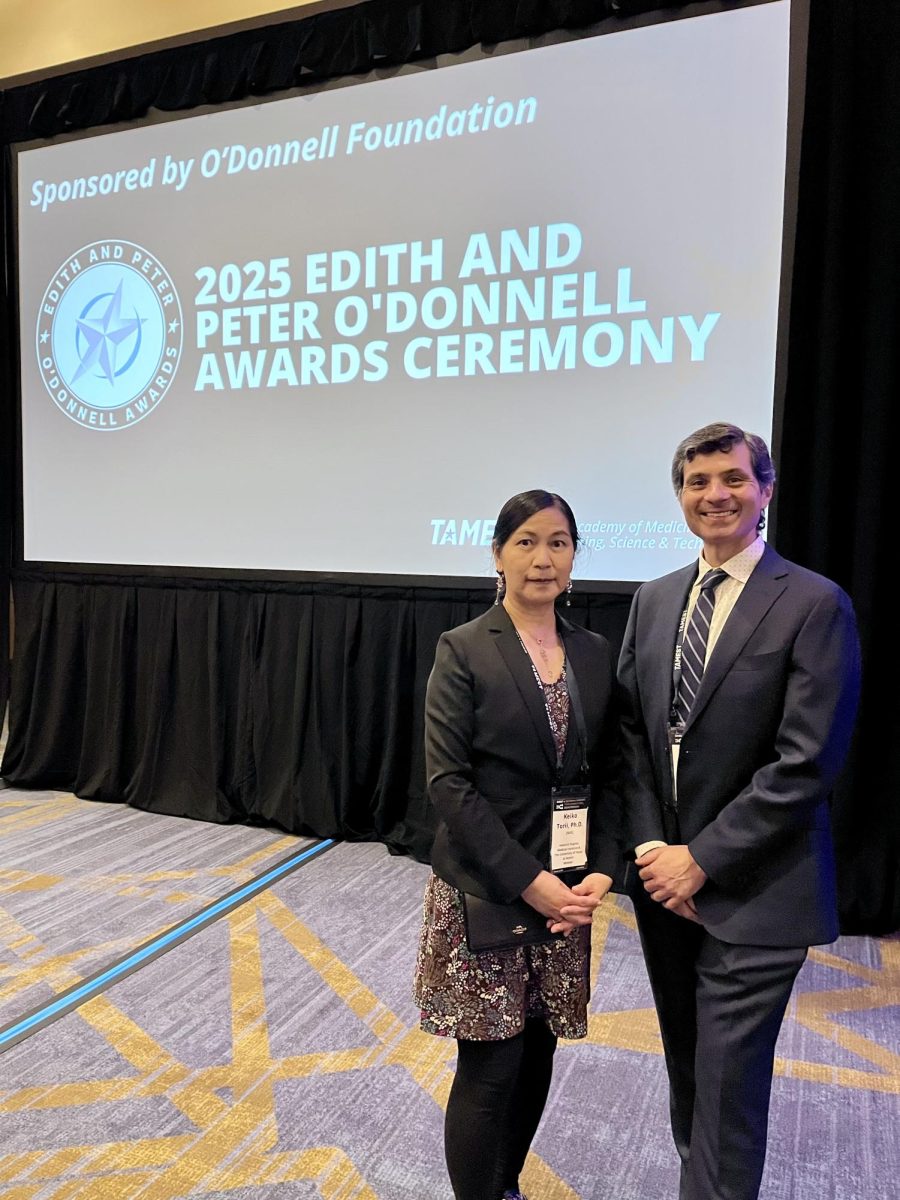Life-size frames made of duct-taped cereal boxes, seven frosty silver trees, 3-D glasses in hazardous waste containers, milky-cotton-fluffed clouds and a miniature dolly were brought to life Tuesday night at the Salvage Vanguard Theater. The common thread that lined up these miscellaneous props was the members of the Kathy Dunn Hamrick Dance Company, who used the items throughout their second run-through of “FlashDance, but Flashier: 30 More Dances in 60 Minutes.”
After reading an interview about theater scenes executed in one-minute intervals, Kathy Hamrick, owner of the dance company, was struck with the idea of executing the concept in dance form.
“I wanted to see how I could put together 30 dances in 60 minutes and have a lot of variety to it, too,” Hamrick said. “I personally don’t want to work my dances in one minute, but I like the idea of moving through dances very quickly.”
She said that while she likes to make hour-long dances, some movement concepts can’t be sustained for an hour. “Some ideas are really better off as small ideas, and I’ve accumulated all of those and put them into ‘FlashDance,’” she said. The performance is not related to the movie, “Flashdance.” Rather, it is named because of the brevity of the dance sections.
Hamrick earned her bachelor’s in modern dance from UT and her master’s in performance and choreography from Florida State University. Between degrees, Hamrick studied dance in New York, and after teaching dance at universities including UT, FSU and Stephen F. Austin State University, she formed her company in 1998.
Having performed the first FlashDance five years ago, which held the same time concept, the company is taking this production to a whole new level this week. What makes the dance “flashier,” Hamrick said, is the heavy reliance on technology that the company did not have access to the first time around.
At the first FlashDance, a kitchen timer, set for 60 minutes, counted down 30 different dances until the timer rang.
Throughout the production, dancers had to hold index cards that Hamrick had marked with numbers on with puffy paint to show the audience what dance they were performing.
This time around, there will be a video countdown projected in the background counting down the 30 dances being performed.
“I’m not sure it will work, but we’re going to try and get people to set their smartphone timers,” Hamrick said. “At the beginning, the video will count down and people will synchronize their timers.”
She said if all goes according to plan, the timers will go off at 60 minutes.
“It’s crazy, and I can’t believe I’m doing it,” she said. “It’s not even choreography right now. It’s logistics.”
“The glasses make the wavelength of light produce reds to be further and blues closer,” Pruitt said. He compared the experience to viewing a hologram, where the viewer’s eyes emphasize the distance, except in this case, live dancers are used. “From the perspective of the audience, the 3D is hyper-extended,” he said. The 3-D segment will last about 10 minutes. “We can’t do it the whole time — it’s too crazy.”
And in the midst of the eclectic elements of the performance, the movement remains the most crucial foundation. The dances do not follow a particular story, but akin to all of Hamrick’s work, the mundane experiences of everyday life are conveyed. Conflict is portrayed through flashes of tension as dancers’ contract muscles, and smooth, resolving releases follow while dancers elongate their limbs.
Hamrick’s movement is always modern, and choreography is the first step in preparing for a production. Hamrick said she starts with new material and then manipulates it with the aid of her dancers.
With a constantly altered tone, the performance may at times go from something fast-paced to something suddenly quiet, Hamrick said. Instead of evoking a sole feeling, Hamrick said she hopes the audience has “30 different ones.”
The music contributes to the often-changing mood of the production. Hamrick has chosen a variety of music, including electronic, house, contemporary and ambient, but all of it is mostly instrumental. Performers will dance to music by Bonobo, Beats Antique, Telepop and Yann Tiersen, to name a few.
Roxy Gage, a UT dance alumna, has been dancing with Hamrick for six years. She is one of the dancers who performed in the first FlashDance.
In her creative process, Hamrick sets the music to the movement half the time, while the other half of the movement comes from the music.
“It’s kind of plain and out there sometimes when Kathy gives us music-less movement,” Gage said. “But when she places music, it gives me a certain way to dance or feel.”
Hamrick said the choreography is a collaborative process in which Hamrick creates much of the movement, but the company members still have their input.
“We try things out in front of Kathy, and if it makes her fall to the floor laughing, it’s in,” Gage said.
Gage said that among the beautifully serious moments, there are comical scenes that she hopes people will notice.
“As it goes with modern dance, a lot of things aren’t obviously funny, but it’s okay to laugh,” Gage said. “You get to interpret lots of things the way you want to, which is the beauty of it.”
Printed on Thursday, December 1, 2011 as: 'FlashDance' combines 30 dances for one-hour show




















